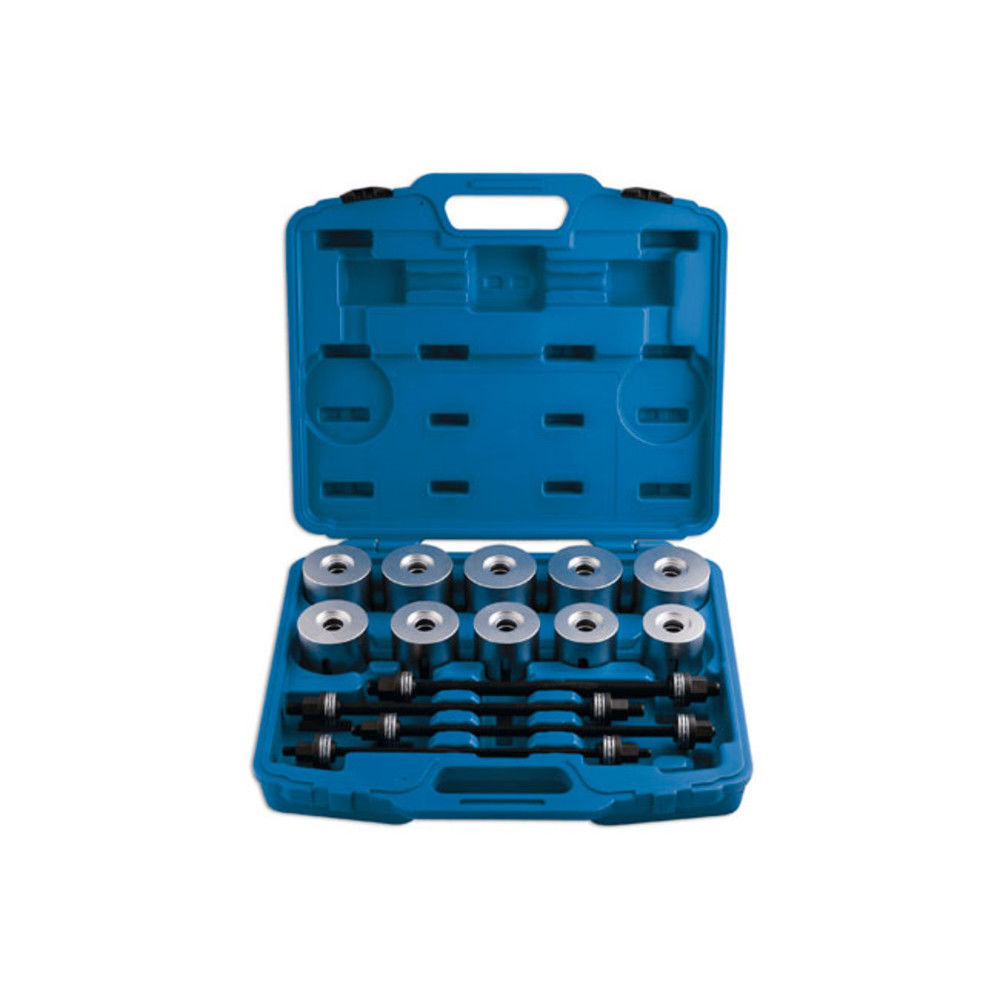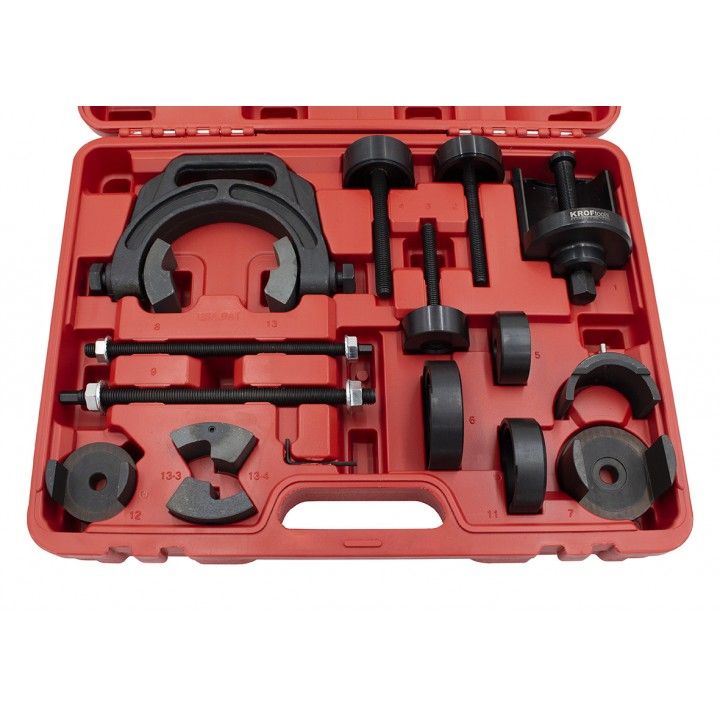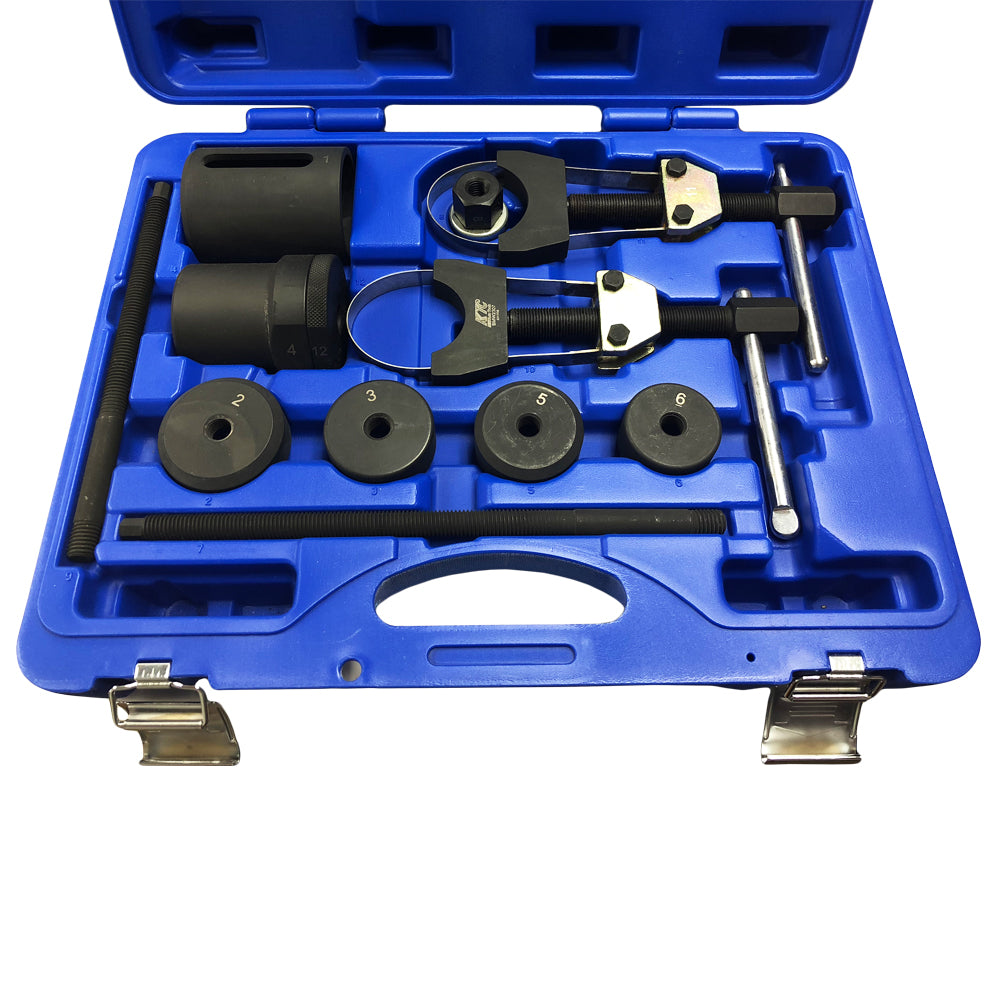Introduction
Bushing removal tools are essential for safely and efficiently removing bushings from various automotive and industrial components. These tools are specifically designed to prevent damage to the surrounding parts and to make the removal process as smooth as possible. Some common types of bushing removal tools include hydraulic press kits, bearing pullers, and slide hammer tools. Hydraulic press kits are ideal for large bushings that are pressed into place, while bearing pullers are perfect for removing smaller bushings. Slide hammer tools are versatile and can be used for a wide range of bushing sizes. Overall, bushing removal tools are essential for any mechanic or technician working on vehicles or machinery.
Bushing removal tools are essential for any DIY mechanic or professional technician working on suspension and steering components. These specialized tools make the removal of bushings from control arms, leaf springs, and other components much easier and more efficient. In this comprehensive guide, we will discuss the importance of bushing removal tools and provide an in-depth look at the different types available on the market.
Part 1: The Importance of Bushing Removal Tools
Hydraulic bushing removal tool use hydraulic pressure to exert force on the bushing, making removal much easier and more efficient. These tools are ideal for removing stubborn bushings, such as press-and-pull kits, use mechanical force to remove bushings from their housings. These tools are often more affordable and easier to use for smaller, less stubborn bushings.
Level 1: Why Bushing Removal Tools Are Necessary
Bushing removal tool is essential for safely and effectively removing worn-out or damaged bushings from various automotive components. Without the proper tools, removing bushings can be a time-consuming and frustrating process, often resulting in damage to the surrounding components.
Level 2: Benefits of Using Bushing Removal Tools
Using a bushing removal tool not only saves time and effort but also reduces the risk of damaging the surrounding components. These tools are designed to exert precise force on the bushing, making removal much easier and safer. Additionally, using a bushing removal tool ensures that the new bushing will be properly seated in its housing, leading to improved performance and longevity.
Part 2: Selecting the Right Bushing Removal Tool
Level 1: Consider the Type and Size of Bushing
Before selecting a bushing removal tool, it’s important to consider the type and size of the bushing you will be removing. Some tools certain types of bushings, so it’s important to choose the right tool for the job.
Level 2: Assessing the Workload
If you frequently work on suspension and steering components, investing in a high-quality hydraulic bushing removal tool may be a wise decision. However, if you only occasionally remove bushings, a manual tool may suffice.
Part 3: Using a Bushing Removal Tool
Level 1: Preparation
Before using a bushing removal tool, it’s important to ensure that the surrounding components are properly supported and that the area is clear of any obstructions. Additionally, lubricating the bushing and surrounding surfaces can make removal easier.
Level 2: Proper Technique
Using a bushing removal tool requires patience and precision. Applying steady force and making sure that the tool is properly aligned with the bushing are essential for successful removal. Additionally, taking the time to properly clean and inspect the surrounding components before installing the new bushing is crucial for optimal performance.
Part 4: Maintenance and Care of Bushing Removal Tools
Here are some general tips for the maintenance and care of bushing removal tools:
- Keep tools clean: After every use, make sure to clean the bushing removal tools thoroughly to remove any dirt, grease, or debris. Use a solvent or degreaser and a brush to clean the tools and wipe them dry with a clean cloth.
- Inspect regularly: Regularly check the condition of the bushing removal tools for any signs of wear, damage, or corrosion. This will help identify any issues early on and prevent further damage to the tools.
- Store properly: Store the bushing removal tools in a dry and clean place to protect them from moisture and corrosion. It’s also a good idea to keep the tools in a toolbox or case to prevent them.
- Lubricate moving parts: If the bushing removal tools have moving parts, such as handles or mechanisms, it’s important to lubricate them regularly to keep them functioning smoothly. Use a lightweight lubricant or oil to maintain the moving parts.
- Replace worn or damaged parts: It’s important to replace them as soon as possible. Using tools with worn or damaged parts can lead to safety hazards and ineffective performance.
- Follow manufacturer’s instructions: Always follow the manufacturer’s instructions for the care and maintenance of the specific bushing removal tools you are using. This will ensure that you are taking the proper steps to keep the tools in good condition.
- Use protective equipment: When using bushing removal tools, make sure to wear appropriate protective equipment, such as gloves and safety glasses, to prevent injuries and keep the tools clean.
By following these tips, you can help prolong the lifespan of your bushing removal tools and ensure they continue to perform effectively.
Part 5: Types of Bushing Removal Tools
- Bushing removal tool set: This set usually includes various sized bushing removal tools can fit different kinds of bushings. These can include press-in, screw-in, and other types of bushings.
- Slide hammer puller: This tool uses a slide hammer mechanism to forcefully pull out stubborn bushings from their housing, saving time and effort.
- Hydraulic press: A hydraulic press with specific adapters can push out bushings with significant force, especially for larger or more difficult to remove bushings.
- Bushing puller kit: A bushing puller kit typically includes a selection of interchangeable adapters and a slide hammer for removing a wide range of bushings.
- Bearing splitter set: While not specifically designed for bushings, a bearing splitter set can remove bushings by gripping the outside of the bushing and then using a hydraulic press or other force application tool to push it out.
- Universal bushing tool kit: This kit may include various tools such as pin punch sets, screw extractors, and other specialized tools for removing different kinds of bushings.
- Pneumatic bushing removal tool: A pneumatic tool that uses air pressure to forcefully remove bushings, particularly useful for quick and efficient bushing removal in an auto shop or similar setting.
These tools can be essential for mechanics, automotive professionals, and DIY enthusiasts to safely and effectively remove bushings from various applications such as suspension components, engines, and other mechanical systems.
Conclusion
After each use, it’s important to clean and lubricate the bushing removal tool to prevent rust and corrosion. This will ensure that the tool remains in optimal working condition for future use. Proper storage is essential for maintaining the longevity of your bushing removal tool. Keeping it in a cool, dry place and protecting it from moisture and excessive heat will prevent damage and ensure that it’s ready for use when needed.
Bushing removal tool is indispensable for anyone working on suspension and steering components. Whether you’re a professional mechanic or a DIY enthusiast, having the right tools for the job can make all the difference. By understanding the different types of bushing removal tool available, selecting the right tool for your needs, and using proper techniques, you can ensure that removal and replacement of bushings is a smooth and efficient process. Additionally, proper maintenance and care of your bushing removal tool will ensure that it remains in optimal working condition for years to come.



